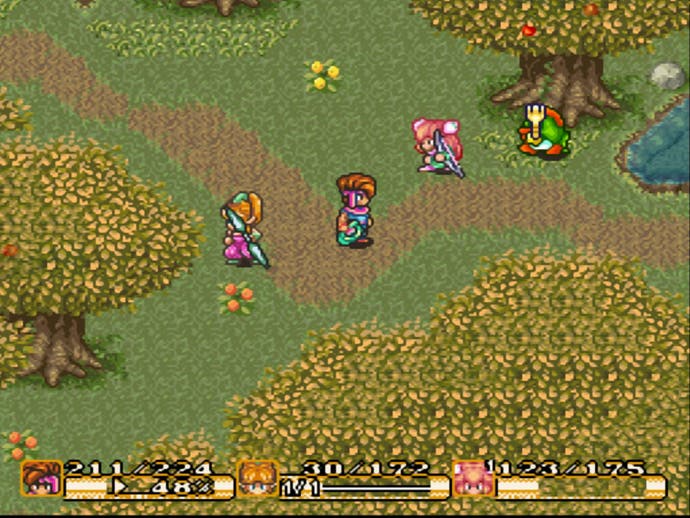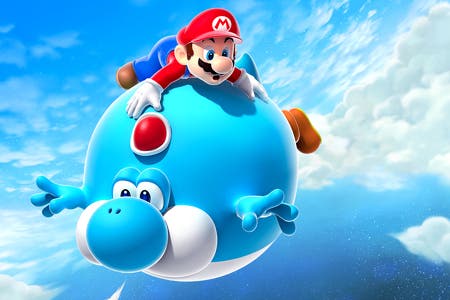Now Mario is an annual series, how long until the Mushroom Pass?
Why Nintendo's conservatism is vital to maintaining its magical hold on players.
So, Nintendo may not be particularly keen to admit it, but Super Mario is now an annual franchise. New Super Mario Bros. 2 will arrive on 3DS in August, less than a year after Super Mario 3D Land appeared on the same two screens.
After 17 Super Mario titles in the first 27 years of the series' life to date, six have now appeared in the last seven: New Super Mario Bros. (DS, June 2006), Super Mario Galaxy (Wii, November 2007), New Super Mario Bros. Wii (November 2009), Super Mario Galaxy 2 (Wii, June 2010), and then the 3DS duo. That's the same number of instalments as we've seen in the Call of Duty series, at least until Black Ops 2 is unveiled.
When New Super Mario Bros. 2 (even the title is hilarious) was announced last weekend, I remember saying to someone I was with: "Cool! How long before we're typing in digits for our Mushroom Pass and patching Mario on day one to fix backwards-flying Koopas?"

Obviously that was rather crass (Koopa Paratroopas can already fly backwards), but while it's always tempting to pretend that Nintendo walks to its own beat, there's a grain of truth in there. Nintendo is actually a far more conservative games company than many others, only adopting even completely proven technologies - like online gaming - when it can do them on its own terms, and conservatism - the desire to "double down" on successful game series - is what breeds things like annual instalments and Online Passes.
As the growing frequency of Super Mario games illustrates, it's not immune to the trends going on around it - the sorts of things that people on our comments threads typically find discomfiting, which is a polite way of saying they hate them hate them hate them.
Games like Call of Duty have been growing ever more accessible through ruthless testing, steering your weapon onto targets, giving you someone to follow at all times, and even allowing you to complete some levels without ever firing a bullet. We laughed, we cried, we called it bad design. Meanwhile, Nintendo made it virtually impossible to run out of lives in Super Mario games, and introduced the Super Guide and Cosmic Guide in its last two Wii titles. What's the difference?
One crumb of comfort may be that the way Nintendo actually sells its wares hasn't changed much despite everything that's going on around the company; despite Online Pass, premium downloadable content, day-one patches, in-app purchases, weapon unlocks, subscriptions and pre-order bonuses. Or at least that was true, but then anyone who pre-ordered Kid Icarus: Uprising from certain retailers was rewarded with a download code for 3D Classics: Kid Icarus - and the recent news that Nintendo's to offer day-and-date downloads for its own titles on Wii U and 3DS shows it's attacking the digital market with conviction.

A cynical commentator might point out that while these things have been rare up to now, that may simply be because the Wii Shop and 3DS eStore lack the infrastructure to support things like premium DLC in their current forms. Perhaps those consistently hectoring Nintendo to make its online service a bit more like PlayStation Network or Xbox Live should be careful what they wish for.
Whatever its motives, however, it is also fair to say that Nintendo has rarely behaved cynically in all of this. It has made mistakes - like the costly 3DS launch shambles and subsequent apology, price cut and Circle Pad Pro release - but, while it has frustrated them over the years, its fans have never had cause to liken its attitude to its corporate adversaries and partners like Activision and Electronic Arts.
It's not just a strong heart, free of cynicism, that vouchsafes the quality of Nintendo's output though. The other thing that makes a huge difference is that Nintendo doesn't actually need to offer my fictional Mushroom Pass, because people don't really trade in Super Mario games in large quantities.
The reason why came to me while I was watching Hayao Miyazaki's wonderful Spirited Away last Sunday evening, although I didn't realise it until later. Spirited Away has always been aptly named, because like so many Studio Ghibli films (especially Howl's Moving Castle, by far my favourite), it transports you utterly to the place where it is set.

A lot of games used to do that to me when I was younger - most notably Secret of Mana on the SNES - but it's become a more elusive sensation as I've grown older and subconsciously set higher standards. It's harder to find things that elicit that completely willing suspension of disbelief, where you can see the structure of the media you're consuming and understand the director's methods, but you give yourself up to them nonetheless.
The best Super Mario and Zelda games still have that. I used to find it in places like World 8 of Super Mario Bros. 3 or the Wind Temple in The Legend of Zelda: The Wind Waker, and these days I find it staring down from the top of a descending stack of platforms in Super Mario 3D Land. It comes from a mixture of places, events, people and ideas; stuff that warms the soul. It creates a bond between the player and the game which cannot be easily broken down, and certainly won't be cast aside by the desire to make another satisfying but forgettable new release £25 cheaper at the till.
For me, then, what will be really interesting about Super Mario arriving once a year, if the run continues, is whether Nintendo can still create that sensation; whether I'd rather cling on to every copy of Mario and Zelda they ever sell to me than give them up for a discount on something that can't elicit that response, whatever else it achieves.
Hopefully, however else Nintendo chooses to bend to the commercial realities of the 21st century, it will always remember that it must not give up that magic. We've forgiven it the 3DS launch, but we had good reason, and hopefully we always will.

